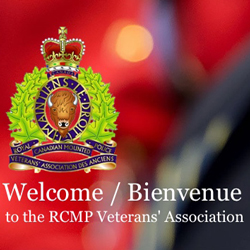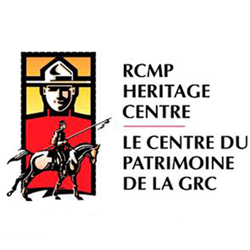Larry Burden’s This Day In The RCMP

The achievements and contributions of the Force have been built upon the individual contributions of many past Veterans. These contributions have largely been forgotten.
Veteran Sgt. Larry Burden ( #35982) served in “E” Division for 20 years has spent over ten years researching and summarizing these achievements by specific date. Nearly every day, Larry sends out an email message with a selection from his work in progress manuscript “This Day In The RCMP” to individuals interested in these historical notes.
In an effort to share his research to a large group, Larry has agreed to permit us to develop a webpage on our website. Each webpage will post Larry’s historical notations over the past week.
If you wish to contact Larry Burden or provide additional information about his research, please email him at larryburden8@gmail.com.
January 16
1886 – On this day Northwest Rebellion veteran #985 Constable Joel Julest was injured (ruptured) while riding a bucking horse at Calgary Alberta.
1899 – #2830 Cst Harry A. Lee (served 1892 – 1900) is one of several members to receive a good conduct badge. In the early days of the Force the “Good Conduct Badge” was a gold star signifying five years of service and good conduct. Back then the star shaped badge was worn on the lower right sleeve, whereas no the service stars are worn on the upper left sleeve. Relatively few members earned the good conduct badge because very few men stayed in the NWMP for more than five years and even fewer managed to avoid service court!

Photograph of Assistant Commissioner Theodore Victor Sandys-Wunsch.
1927 – A three man dog sled patrol including #O.195 Inspector Theodore Victor Sandys-Wunsch, #9261 Sergeant John Rowland Paton and #9587 Constable William Arthur Cooper left the Liard Detachment to take winter mail 160 miles south to the nearest post office at Porter’s Landing on the Dease River. Battling extreme cold weather Sgt. Paton developed badly frostbitten hands while breaking trail for the dog team resulting in gangrene setting in. To save his hand Inspector Sandys-Wunsch amputated part of one of Sergeant Paton’s fingers.
1939 – The third Sgt. Renfrew movie “Crashing Thru” is released by Monogram starring James Newill and Jean Carmen. The plot; six people are in on a gold robbery and half of the crew double-cross the others. Sgt. Renfrew goes after them alone after his partner Kelly is wounded.
1941 – #10941 Sergeant Earle Carter Clendenning received a commendation for recapturing an escaped mental patient.
2004 – #41748 Constable Desmond R. Burridge came to the aid of the Highways Department in a severe winter storm and assists in evacuating the area adjacent to Hampden Newfoundland where the sea was washing over the highway.
January 17
1986 – Mounties seldom rest. While off duty #27058 Sgt George W. Mallett arrests a fraud suspect that had eluded the Nepean Police and receives a commendation.
1993 – With only two years experience #43661 Constable Bruce Grant Pitt-Payne successfully negotiated the release of eight hostages who were being held gunpoint in the Health Centre, in Brooks, Alberta.
Constable Pitt-Payne convinced the deranged gunman who was armed with AK47 to release the hostages and then convinced him to surrender. For his actions he was awarded the Commissioners Commendation for bravery.

January 18

1899 – #2353 / O.185 Inspector Kristjan Fjeldsted Anderson arrived back at Fort Saskatchewan after traveling with two dog teams from the Fort to Peace River via Athabasca Landing & Lesser Slave Lake and then returning with the mail The mail patrol covered over 800 miles.
1899 – #2353 / O.185 Inspector Kristjan Fjeldsted Anderson arrived back at Fort Saskatchewan after traveling with two dog teams from the Fort to Peace River via Athabasca Landing & Lesser Slave Lake and then returning with the mail The mail patrol covered over 800 miles.
1953 – Monogram Pictures releases their newest movie “Fangs of The Arctic” The movie has nothing to do with the Arctic but instead has two undercover Mounties, Corporal Rod Webb (Kirby Grant) and Constable Mike Kelly (Robert Sherman), along with Chinook the Wonder dog. Together they travel to Blackfoot Crossing country to find the killer of a trapper Antonie Dubois, and investigate reports of illegal deals in beaver pelts. Monogram releases another classic; Yukon Vengeance” a year later.
1961 – A United States Air Force C-47 en route to Frobisher Bay NWT transporting 12 people encountered engine problems and was forced to crash land on the ice. The pilot managed to send out a “mayday” to the nearby radar station before the pane crashed. Miraculously everyone aboard survived the crash but all twelve people had to flee the wreckage and brave the nearly 50 below zero weather because the ice beneath the plane began to breakup. Aboard the plane was a Canadian Air Commodore, eight American Air Force personnel and three USO performers, Betty and Jean Amos and Judy Lee Schreiber. The 12 survivors huddled in a circle in a futile attempt to stay warm and waited in vain expecting to freeze to death before a rescue team could find them.
Fortunately for them RCMP pilot #15969 / O.633 Robert Lorne Fletcher flying a twin engine Otter with skis was in the area and managed to locate the downed aircraft and safely landed his plane on the ice nearby. When the survivors realized that only nine of them could fit in the rescue plane and that the plane would not be able to come back until daylight the next day they refused to get aboard if they all could not be rescued then. Fletcher then piled all twelve into his plane and with American Colonel Victor Milner acting as co-pilot he revved up the engines and began taxiing in circles on ice to gather up enough speed so they could lift the severely overloaded aircraft off of the ice. As the plane lifted off they nearly crashed when one of the skis collided with an ice boulder and ripped the ski off of the plane.
Fletcher managed to keep the plane airborne and began circling to gain some altitude before flying ten miles to the Resolution Island radar station. As the Otter approached the air strip Fletcher realized he was going to have to make the landing of his career because the runway was very short and had a 200’ drop off at the end of it. With everyone aboard whispering prayers, he brought the plane safely home on one ski.
On March 2, 1961, Lorne Fletcher was presented a Scroll of Appreciation from US Consul General for his courage in rescuing the twelve survivors.
January 19
1943 – Princess Margriet of the Netherlands is born in Ottawa while the Dutch Royal family is living in exile from the NAZI occupation of Holland. The maternity ward of Ottawa Civic Hospital was temporarily declared to be officially part of the Netherlands so that the princess would be born on Dutch soil. The third child of Queen Juliana of the Netherlands and Prince Bernhard was named after the marguerite, (the oxeye daisy Chrysanthemum leucanthemum) the flower worn during the war as a symbol of the resistance to Nazi Germany. In 1945, the Dutch royal family began the annual tradition that is continued to this day of sending 100,000 tulip bulbs to the people of Ottawa as a gesture of thanks for having housed the Royal Family and declaring the maternity ward where Princess Margriet was born Dutch territory. As a result of this gift in 1953 the City of Ottawa began holding what has now become the largest Tulip Festival in the world.

1987 – Member of Parliament the Honorable Erik Nielsen resigns as MP for the Yukon after serving 30 years in politics. The former Deputy Prime Minister in the Clark Government of 1972 was the brother of Hollywood actor/comedian Leslie Nielsen. Their father was a member of the RCMP #8098 – Retired Constable Ingvard Everson Nielsen who later joined the Alberta Provincial Police.
January 20
1899 – The first group of about 2,000 Russian Doukhobors lands in Halifax Nova Scotia en route to the west where they settle in Alberta and eventually in British Columbia. 5,400 additional members follow shortly thereafter. These first members of this mystical Christian sect (the name means ‘spirit wrestlers’), are sponsored by Count Leo Tolstoy, the novelist and author of War and Peace.
1943 – Honour Roll Number 105.

Photograph of the RCMP Cenotaph at “Depot” Division in Regina with the name of RCMP Corporal Laurene Ryder’s name highlighted in red (Source of photo – Sheldon Boles).
#11371 Corporal Laurence Percival Ryder age 39 died of complications resulting from a cerebral hemorrhage he received when he was attacked at Woodstock, N.B. on September 2, 1943.
Cpl. Ryder had spent ten years in the RCMP most of which was served in the Fredericton area. On September 2nd 1943, Ryder was working in Woodstock when, without provocation he was attacked from behind by Arnold Blaney, who grabbed him and turned him around slugging him on the jaw. The impact of the unexpected blow nearly rendered him unconscious and as he fell backwards he slammed his head on the bumper of his car. As the policeman attempted to get back on his feet, his assailant hit in the face a second time. Undaunted, Cpl. Ryder managed to get to his feet and fought with his cowardly assailant and eventually overpowered and arrested him for assault. After delivering Blaney to cells, Cpl Ryder went home to his wife Vera because he was feeling ill. Though Cpl. Ryder never filed a sick report he continued to suffer from constant pain in the back of his head. Four months after the incident Laurence Ryder fell seriously ill and on January 13th he suffered a stroke and began hemorrhaging. He later developed pneumonia and eventually slipped into unconsciousness and died.
Arnold Blaney could not be charged with manslaughter because he had already been sentenced to six-month jail term for assault causing bodily harm.
Laurence Percival Ryder was buried in the Rockland Cemetery in McAdam Junction leaving behind his wife and 12-year-old son.
1984 – Constables #36610 P.A. Snow and #37770 David W. Bellamy of Langley BC attempted to save the life of someone trapped in a burning building. For their efforts they were awarded Meritorious Certificates from The Most Venerable Order of the Hospital of St. John of Jerusalem.
January 21
1900 – #2821 S/Sgt Frank (Old Sex) Sexton a veteran member of the 2nd Canadian contingent to the Boer War died this day while serving at Lethbridge of “ashmatical bronchitis”. He was buried in the Mountain view Cemetery in Lethbridge Alberta in the Mounted Police section in Section P1-17, Row1, Lot 1N.
1974 – After receiving a complaint of an overdue hunter Frobisher Bay detachment members #21351 Corporal Carl A. Lentowicz and Constables #27694 David I. Gallant, and #25081 Ken Munro organized a search party of local volunteers and at 0430 a.m. headed out on snowmobiles in the -35 degree weather to search for the man who was 80 miles away. At 10:45 a.m. #23607 Staff Sergeant Dan Hickey the pilot of CF-MPF located the missing man and dropped him a note advising him to stay where he was because a search party was coming for him. Hampered by engine problems with their new snowmobiles the search party finally reached the hunter at 1:30 p.m. and began treating him. The hunter had walked all night in an attempt to prevent his feet from freezing, but by the time the rescue party arrived large portions of his feet and fingers were frozen. The rescuers then headed back to Frobisher Bay but several of them ended up walking the final seven miles because the snowmobiles had broken down again. All of the rescue party finally made it back safely well after midnight, wishing that the Force had not replaced sled dogs with snowmobiles.
1985 – Montreal Drug Squad member #30610 Constable Mike Fletcher was named the “Police Officer of the Year” by The National Association of Chiefs of Police of the United States. He was honored for his distinguished public service and dedication and work with the “Blue Knights Motor Cycle Chapter in Detroit Michigan. Cst. Fletcher is the first Canadian peace officer to be elected President of the 7000-member international law enforcement motorcycle club.
1988 – #33667 Cst. Al R. Malcomson earned a Commanding Officers Commendation after he disarmed a dangerous, unstable man who had barricaded in house in Port Alberni BC. Constable Malcomson calmly negotiated with the suicidal man and convinced him to surrender and come out of his home.


 January 17, 2017
January 17, 2017 






